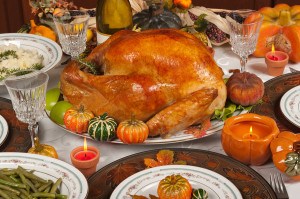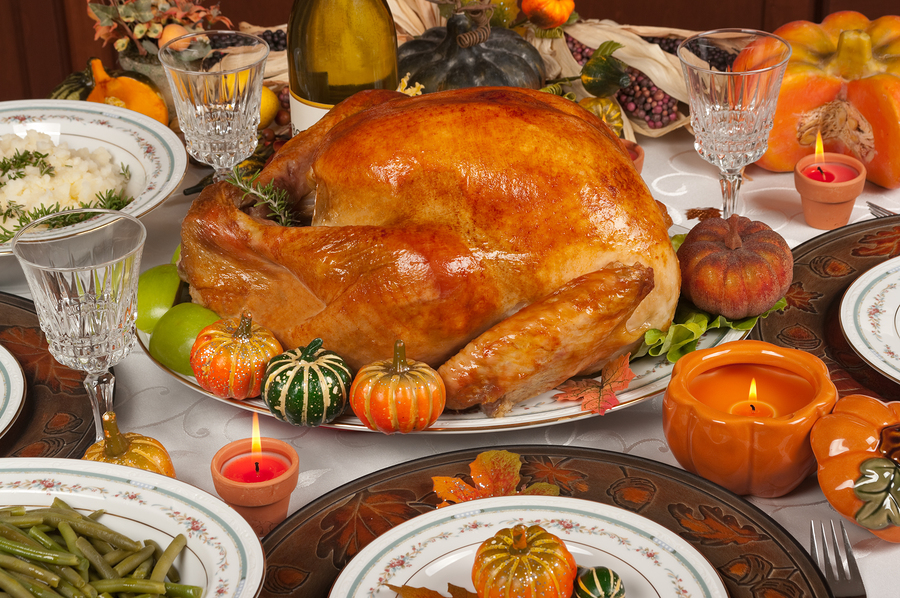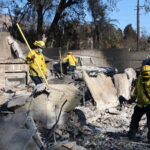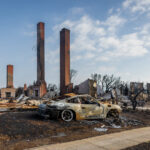 The song says “It’s the most wonderful time of the year,” but it can also be the most dangerous. The period between Thanksgiving and New Year’s Day is fraught with hazards from car crashes to house fires to holiday-related injuries. To help ensure revelers have a safe holiday season, Penn.-based Erie Insurance is raising awareness of some of the most dangerous holiday hazards and how to avoid them with this infographic.
The song says “It’s the most wonderful time of the year,” but it can also be the most dangerous. The period between Thanksgiving and New Year’s Day is fraught with hazards from car crashes to house fires to holiday-related injuries. To help ensure revelers have a safe holiday season, Penn.-based Erie Insurance is raising awareness of some of the most dangerous holiday hazards and how to avoid them with this infographic.
“Being aware of the biggest risks to you and your loved ones’ safety during the holidays can help prevent accidents,” said Rick Burt, executive vice president of products at Erie Insurance. “Each holiday hazard we identified is preventable.”
Below are some of the most common holiday hazards and how to avoid them.
| The hazard | The numbers | Tips |
| Bonfires and fire pits |
National Fire Protection Association reports 692,000 outside and other fires occurred in 2012. | – Place fire pits at least 10 feet away from your house or other structures.
– Keep fire pits away from trees, brush and other flammable materials. |
| Cooking holiday meals |
Three times as many home cooking fires occur on Thanksgiving than any other day of the year according to the National Fire Protection Association.
NFPA reports there were 1,370 home cooking fires on Thanksgiving in 2010, a 219 percent increase over the daily average. |
– Deep fryers can be hazardous, so always fill turkey fryers with the proper amount of oil.
– Never drop a frozen turkey into hot oil as it could cause flare-ups. – Put turkey fryers on a level surface. – Never leave the fryer unattended. |
| Heart attacks | According to a national study published in the journal Circulation, the number of cardiac deaths is higher on Dec. 25 than on any other day of the year. The study reports Dec. 26 is the second highest, and the third highest is Jan. 1. | – Avoid exposure to very cold temperatures and dress warmly.
– Avoid excess salt and alcohol, which can cause an abnormal heart rhythm that increases the risk of stroke, heart attack and heart failure. – Minimize heart stressors such as overexertion and emotional stress. – Don’t let fear of disrupting the holidays lead you to ignore chest pains—seek immediate medical attention. |
| Holiday decorations | According to the U.S. Consumer Product Safety Commission (CPSC), the number of holiday decoration-related injuries increased by 1,000 each year from 12,000 in 2009 to 13,000 in 2010 to 14,000 in 2011.
CSPC also says Christmas tree fires caused $19 million in property losses between 2008 and 2010. During this same period, candle-related fires resulted in reports of 74 deaths and $347 million in property losses. |
– Inspect lights every year for frayed wires, excessive kinking and cracked sockets.
– Ensure ladders are on secure and level ground. – Make sure all decorations are nonflammable or flame-retardant – Keep decorations, including live Christmas trees, away from heat vents. – Never leave a burning candle unattended; better yet, consider using battery operated flameless candles. |
| Car accidents | Thanksgiving is one of the deadliest times to be on the road, according to MADD.
In 2010, 174 people were killed in drunk driving crashes during the holiday weekend, accounting for 40 percent of highway deaths. |
– Stay sober or designate a driver.
– Always wear your safety belt and place children in properly installed car seats. – Keep your eyes on the road and your hands on the wheel—keep distractions to a minimum. – Properly maintain your car for winter weather. |
| Sledding accidents | According to a study published in Pediatrics, more than 20,000 children are injured every year in sledding accidents. | – Choose snowy hills rather than icy ones.
– Avoid hills that end in streets or parking lots, or near ponds, fences or other obstacles. – Wear a helmet. |
| Slips and falls | Falls are one of the leading causes of unintentional
injuries in the United States, accounting for approximately 8.9 million visits to the emergency department, according to the National Safety Council. |
– Wear footwear with low heels and rubber soles for better traction.
– Avoid rushing; walk slowly and deliberately. – Keep hands free and out of pockets. – Avoid icy surfaces. |
Was this article valuable?
Here are more articles you may enjoy.


 Trump’s Tariffs Threaten to Endanger the Cheap American Car
Trump’s Tariffs Threaten to Endanger the Cheap American Car  New Fire Maps Put Nearly 4M Californians in Hazardous Zones
New Fire Maps Put Nearly 4M Californians in Hazardous Zones  Scammers Are Pushing Auto Loan Fraud to Record Levels
Scammers Are Pushing Auto Loan Fraud to Record Levels  Wall Street Brokers Start Trading Insurer Claims From LA Fires
Wall Street Brokers Start Trading Insurer Claims From LA Fires 